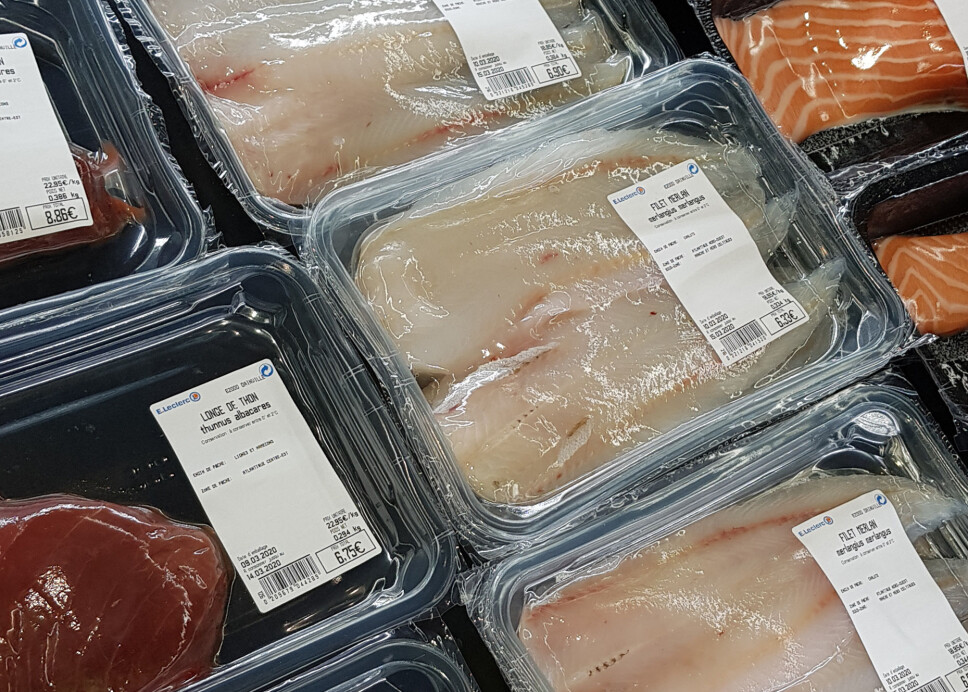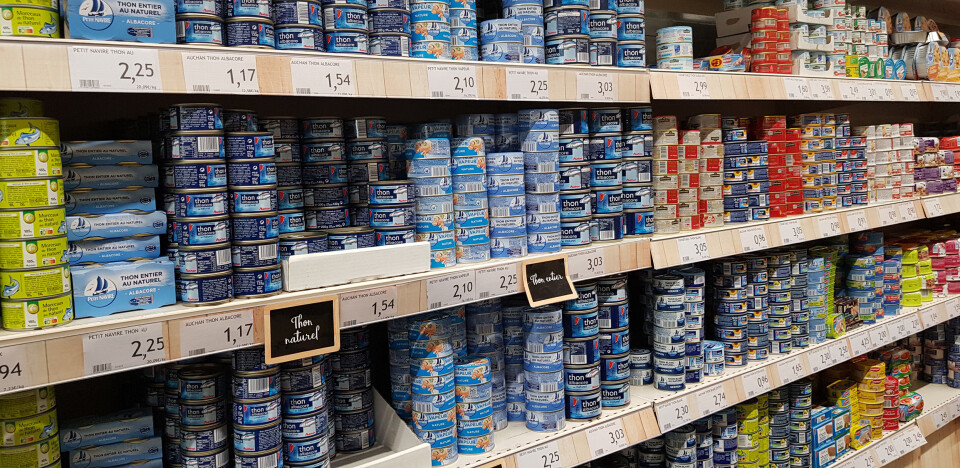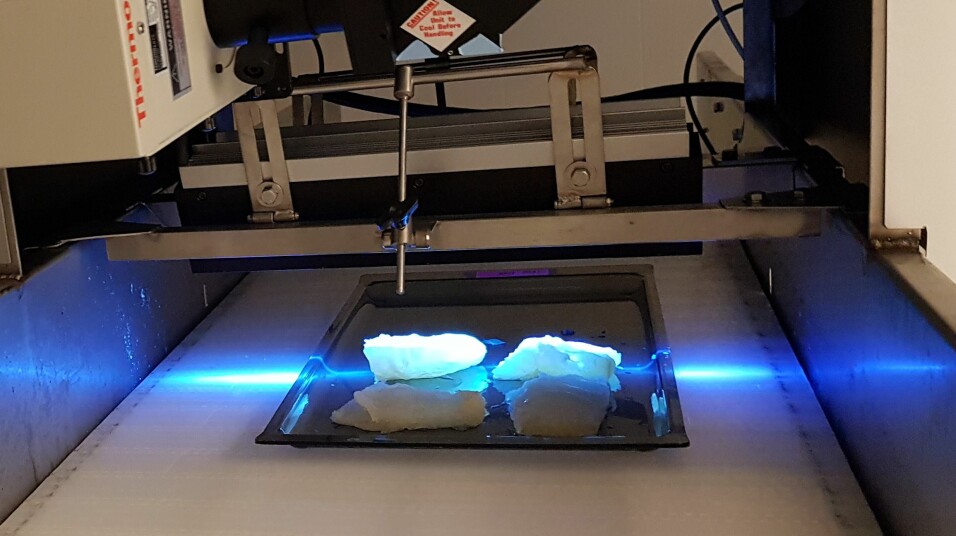
Food fraud: Do you really know what fish species you are eating?
When you buy fish from a store, or when you are served a fish dish in a restaurant, you expect to get what the label says or to eat what you ordered. Unfortunately, the reality is sometimes far from expectations.
You have probably heard of the common types of food fraud, like dilution of milk, substitution of extra virgin olive oil with another oil, adulteration of honey with sugar syrup, etc. But did you know that in some cases you have to worry about being swindled with fish, shrimp, and sushi even more than the other food categories?
Food fraud is nothing new, and it has been around since ancient times. However, it is only recently that fraud in food, especially seafood, has started to occur more frequently than before, and in more creative and trickier ways than one might imagine.
A global problem
Fraud in seafood is a widespread issue, and seafood products are often ranked among the top food product categories that are subject to fraud. Examples of fraud or fraudulent practices have been discovered in all parts of the seafood value chain. Recent investigations from the non-profit organization Oceana and the Food and Agriculture Organization (FAO) show that about a third of all fish and seafood products we are eating worldwide is mislabelled.
It has been reported that there is a steady increase in seafood fraud across the world, and this can be explained by several things.
First, the heterogeneity of seafood and variations from fish to fish and even within the same fish can make it difficult to analyse and monitor fish quality and authenticity.
Other factors that facilitate fraud in seafood are the large varieties of commercial species (150–200 species), the global nature of the supply chain, the emergence of sophisticated fraud tactics, different standards in different countries, and different languages, just to mention a few.
It should be pointed out that even though fraud can occur at any stage of the production chain, this does not mean that the entire production chain should be held responsible in the case of a fraud. The vast majority of seafood actors follow the rules and respect the regulations, but it is well known that it takes only one bad apple to ruin the whole bunch!
The main forms of seafood fraud include:
- labelling low-value species as more expensive ones
- selling cheaply farmed fish as more expensive wild-caught fish
- selling traditionally farm-raised fish as more valuable ecological or organic varieties
- mislabelling the origin of seafood products
Species substitution is the most frequent fraud in seafood
It might be easy to recognise a chicken from a duck, but it’s not that easy when it comes to seafood, especially if the fish is in the form of a fillet without skin or if the seafood product has been processed. Then it becomes pretty difficult to tell what‘s what. In this case, it is easy to substitute a high-value fish species with a cheaper alternative in order to make more profit.
A typical example of species substitution is an Asian catfish, which is called Pangasius. This farmed fish has a neutral or almost no flavour and can be sold at a very low price, making it a good candidate for seafood fraudsters. Thus, some restaurants commit fraud by serving this cheap fish species instead of more expensive and exotic fish species like sole or halibut.
In many countries around the world, fraud by selling, for example, haddock and pollock as cod, catfish as sea bass or sole, and tilapia as snapper is quite common.
Fraud in other fish species like tuna is even more rampant due to the big differences in price of different tuna species (skipjack, yellowfin, albacore, bigeye, bluefin) and their similarity when they are processed (e.g., canned tuna).

Why is it important to know exactly which fish species you are eating?
Species substitution is one of the obstacles standing in the way of a more sustainable fish and seafood industry, and this is due to several reasons.
First, the fraud decreases consumer confidence in the seafood products and can result in a decrease in acceptance and consumption of seafood.
Second, fraud creates unfair competition between seafood companies that offer fake or adulterated seafood and honest producers who provide authentic seafood. For example, a restaurant that delivers Pangasius (about NOK 50/kg, or 5 USD) as sole can make a huge profit compared to another restaurant that serves authentic sole (about NOK 400./kg, or 40 USD).
Third, and more importantly, fraudulent practices may also lead to public health risks. A typical example of this is sushi restaurants that mislabel the served fish species by using, for example, escolar (a type of mackerel-like fish) instead of white tuna. In this case, the problem is not only ripping off consumers who get a completely different species than the one they paid for, but also this fish species (escolar) can cause digestive issues such as severe gastrointestinal distress.
Fortunately, health problems associated with consumption of seafood are not common, and eating fish and other seafood is highly recommended due to their high-quality proteins, omega-3 fatty acids, vitamins, and minerals.
Last but not least, the fraud can have a negative environmental impact by contributing to depletion of overfished species or high-risk species such as tuna. For instance, according to the FAO most tuna stocks are fully exploited and some of them, like bluefin tuna, are already overexploited in some geographical areas (Atlantic stocks).
This last point leads us to discuss the provenance or geographical origin of seafood.
Geographical origin
Do you think that seafood is the most environmentally friendly food you can choose to eat? This is not always true if the fish does not come from sustainable sources, for example, if you eat Atlantic cod that is derived from an overfished area such as Northwest Atlantic. Another example is halibut, which is sustainable if it comes from the Pacific Ocean because the stocks there are well managed, while this species is overfished in the Atlantic Ocean.
So, why is it important to know where your fish come from?
Well, from an environmental perspective, if you select a fish species that comes from fish stocks that are managed sustainably in a responsible way, then you play a key role in preserving the integrity of wild stocks. Also, authentication of the geographical origin of seafood is important for consumers who care about geographical indications, such as Protected Designation of Origin.
Production method and farming system
The same fish species that originate from catch (wild) or aquaculture (farmed) do not have the same properties, and consumers often prefer the wild fish. That is why selling farmed fish as wild is considered a fraudulent practice.
When it comes to fish farming, several farming systems (conventional aquaculture, organic aquaculture, etc.) are practised, and many consumers believe that organically farmed fish is healthier and of higher quality in terms of animal welfare and environmental perspectives compared to conventionally farmed fish. Because the price of organically farmed fish is higher than conventionally farmed fish, it is not surprising that some dishonest companies try to pass off conventional seafood products as organic as a way to make more money.
Are there other types of seafood fraud?
Other fraudulent activities, like selling frozen/thawed fish as fresh fish, injecting water into the fish to increase the weight, or the addition of cheap vegetable proteins or plant products to more expensive seafood products, have been widely reported.
Even more “original and creative” fraudulent practices have emerged recently, leaving us in hilarious disbelief! Could you ever have imagined that some fraudsters would use plastic googly eyes on their fish to make them appear fresher and more appealing to customers?
How to tackle seafood fraud?
The food that we eat should be safe, authentic, and properly labelled. But how to distinguish between, for example, processed albacore and bluefin tuna? Authentic organic farmed salmon and a mislabelled one? Atlantic and Pacific halibut?
There is no easy answer to these questions.
Nowadays, in order to verify fish provenance, we look, for example, at the chemical composition of proteins, fatty acids, and other constituents. The basic assumption behind these traditional methods is that fish coming from different origins should have different amounts of these components.
For other fraud issues like species substitution, there is no other way to check than DNA testing. These reference techniques are quite accurate and precise, and they have successfully been used to detect seafood fraud.
Great, right?
But if we have such high-performing methods, then why fraud is still so rampant in the seafood industry? In fact, the aforementioned techniques are expensive and destructive and require long analysis times, and therefore only about 1% of the production is actually inspected.
Thus, the chance for a fraudulent practice to be detected is less than 1%, and so we still have a major problem on our hands and need to look for new alternatives.

Possible solutions with spectroscopy
Maybe the solution can be found in light! Jean Giono, a French author, said: “When mysteries are very clever, they hide in the light”.
The interaction of light with matter (in our case seafood) is called spectroscopy, and several spectroscopic techniques have been developed in recent years based on this principle. These techniques are increasingly being used internationally to test for seafood fraud, and the results have been promising. Spectroscopic techniques can be applied throughout the production line, meaning that 100% of the production volume can be scanned.
During my PhD studies in France, I tested the potential of what is called fluorescence spectroscopy as a rapid method for investigating various authenticity issues of fish. The technique is based on the emission of light from specific molecules in fish after illumination or excitation with a dedicated light source.
To fluoresce means to emit light via the process of excitation-emission. Unlike traditional methods, here there is no need to determine the contents of major components (proteins, fatty acids...) but only light emission from minor constituents like riboflavin, tryptophan, and coenzymes among others. These fluorescent molecules emit different colours of light or light of different intensities according to the status of the material, and the fluorescence spectrum can be used as a fingerprint for the authenticity of the material.
This method is simple, rapid, and highly sensitive. We used the technique to detect species and geographical origins of tuna, and the results were clear. Emitted light from albacore tuna was different from fluorescence from yellowfin or skipjack tuna, and the fluorescence from the same tuna species was dependent of its origin (Pacific, Atlantic, or Indian Ocean). In another experiment, we used fluorescence spectroscopy to discriminate between fresh and frozen/thawed fish, and again the results were quite consistent.
Researchers are now optimising and adjusting these techniques to make them suitable for industrial applications for real-time analysis. My research colleagues have recently shown that it is possible to implement a spectroscopic sensor on the production line and automatically sort out fish according to species upon delivery.

The “fluorescent” future of seafood
It is my opinion that the threat of seafood fraud has not been taken seriously enough until recently, thus we cannot expect to be rid of this problem any time soon. However, I believe that the future of seafood is bright as researchers have fortunately begun to shed some light on this issue over the past few years.
With the development of new technologies based on spectroscopy, especially fluorescence, it can be presumed that fraudsters in the near future will have no ability to commit fraud or to escape the consequences. Until that time, we as consumers should be careful when buying fish or enjoying a fish meal in a restaurant. And the old saying “if something seems too good to be true, it probably is” should be followed.
Consumers should be aware of the impact of their choices on their health, society, and the environment. We all, as responsible and environmentally conscious consumers, can help in preventing or minimizing the problem of fraud in seafood. This can be achieved by avoiding the fish if we think it comes from overexploited stocks or that it belongs to a threatened species, or by choosing seafood with environmental labels. In this way we can contribute to creating incentives for producers and retailers to produce more environmentally friendly seafood products.
References
Olmstead, L. (2016). Real Food Fake Food: Why You Don’t Know What You’re Eating & What You Can Do about It, Algonquin Books, Chapel Hill.
Liou, P., Banda, A., Isaacs, R.B., Hellberg, R.S. (2020). Labeling compliance and species authentication of fish fillets sold at grocery stores in Southern California. Food Control, 112, 107137.
Reilly, A. (2018). Overview of food fraud in the fisheries sector. http://www.fao.org/3/I8791EN/i8791en.pdf
Hu, Y., Huang, S. Y., Hanner, R., Levin, J., & Lu, X. (2018). Study of fish products in Metro Vancouver using DNA barcoding methods reveals fraudulent labeling. Food Control, 94, 38–47.
Warner K, Mustain P, Lowell B, Geren S, Talmage S. (2016). Deceptive dishes: seafood swaps found worldwide. Oceana. https://usa.oceana.org/sites/default/files/global_fraud_report_final_low-res.pdf
Karoui, R., Hassoun, A., & Ethuin, P. (2017). Front face fluorescence spectroscopy enables rapid differentiation of fresh and frozen- thawed sea bass (Dicentrarchus labrax) fillets. Journal of Food Engineering, 202,89-98.







